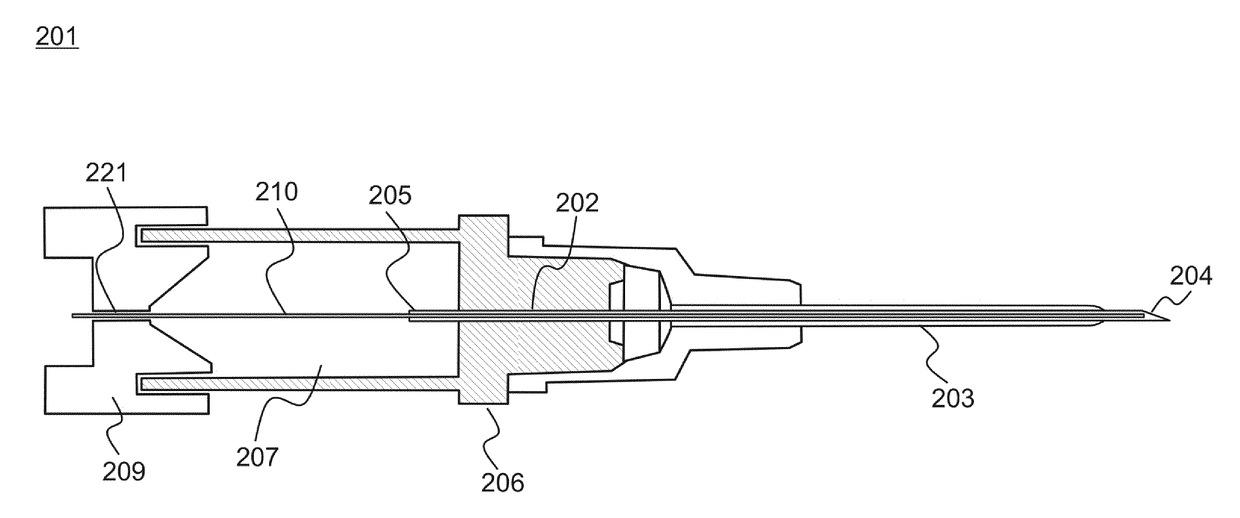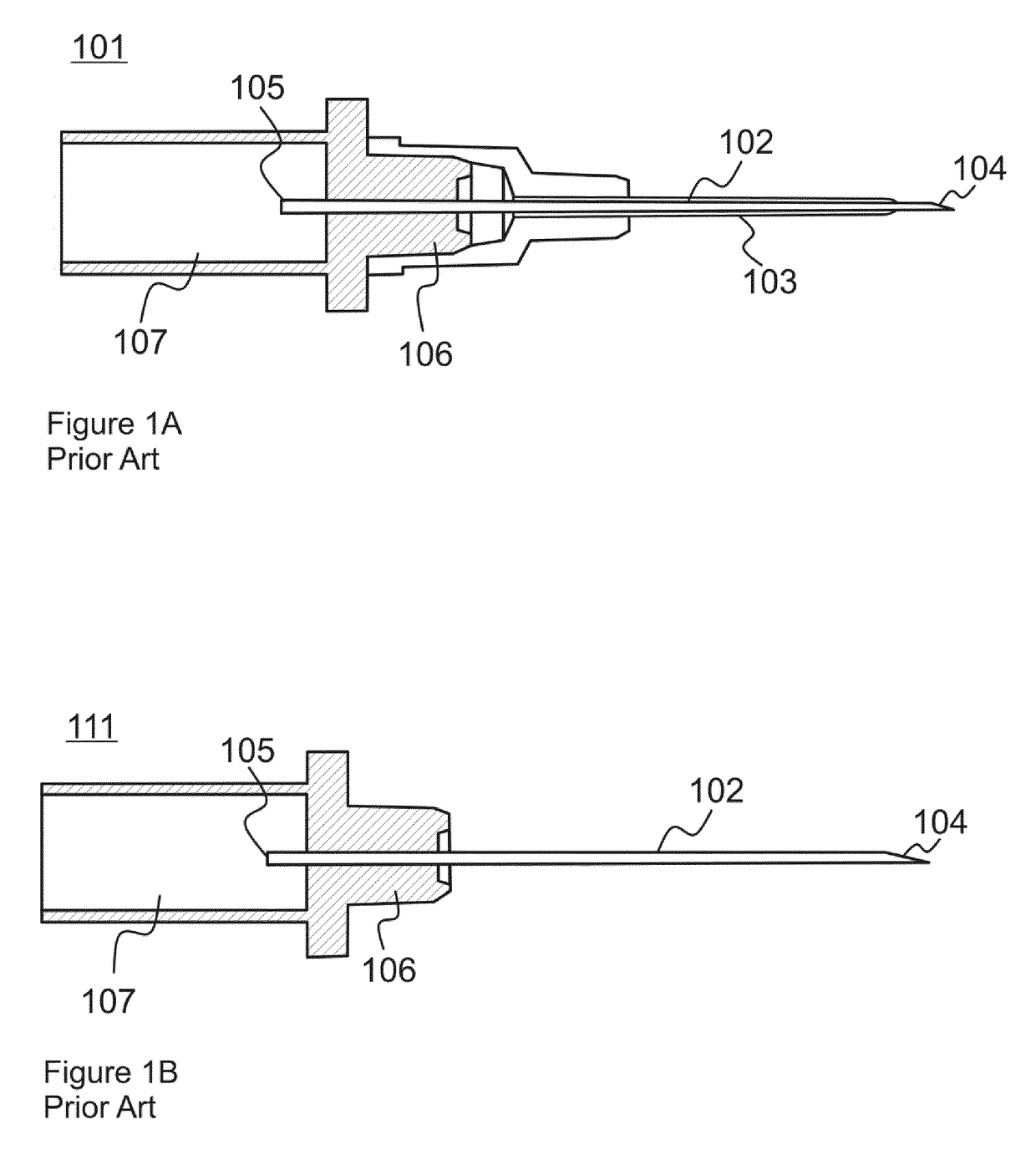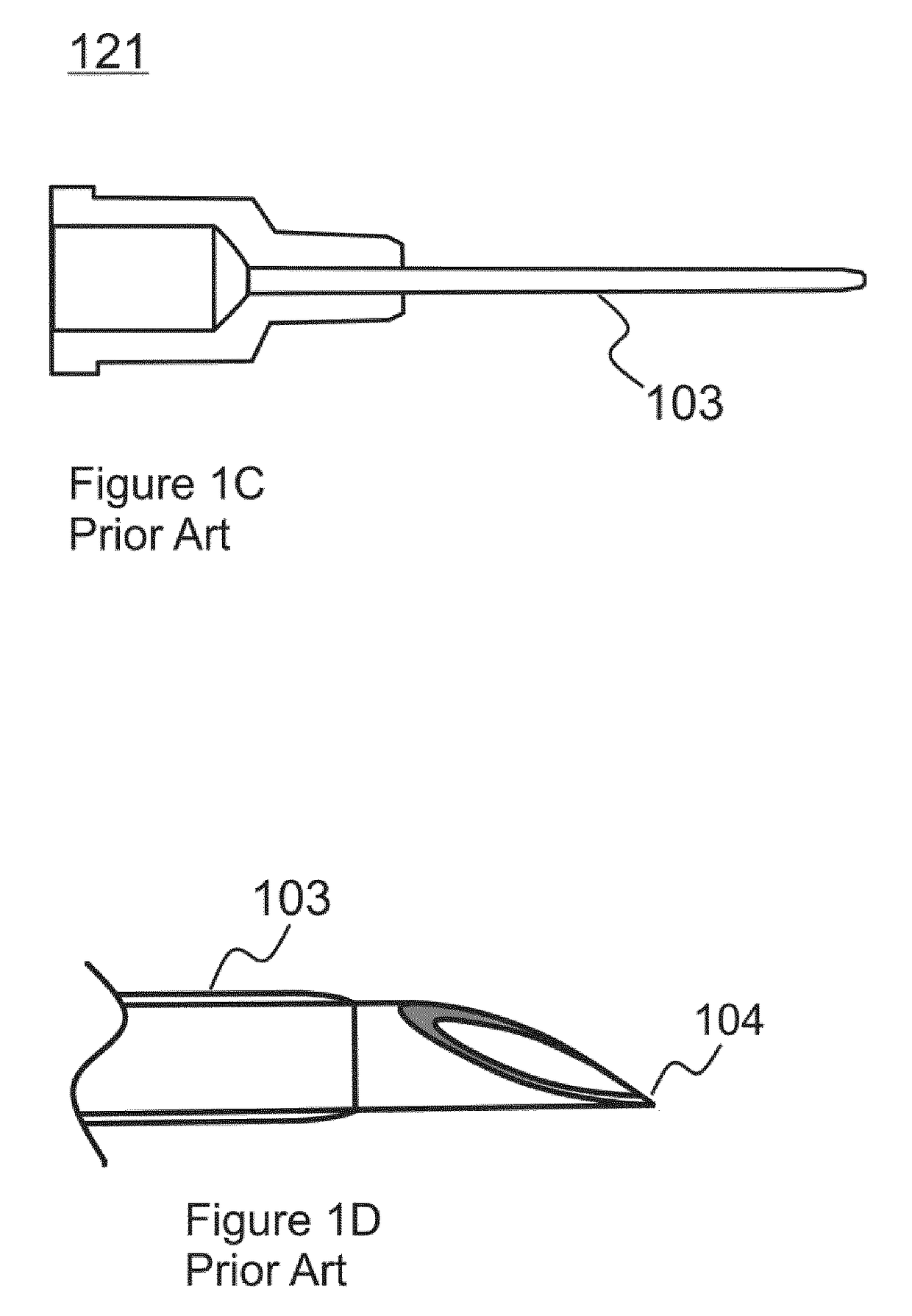Intravascular catheter assembly
a technology of intravascular catheter and assembly, which is applied in the field of intravascular catheter systems, can solve the problems of inability to ensure whether the puncture is correct, inability to detect the moment of venipuncture, and inability to allow however some amount of blood to flow into the flashback chamber, so as to achieve the effect of fast and accurate method
- Summary
- Abstract
- Description
- Claims
- Application Information
AI Technical Summary
Benefits of technology
Problems solved by technology
Method used
Image
Examples
Embodiment Construction
[0087]Detailed embodiments of the present invention are disclosed herein with the reference to accompanying drawings. The same reference characters are used throughout the drawings to refer the same members. Following citations are used for the members:
[0088]Prior Art:[0089]101—intravascular catheter assembly;[0090]111—introducer needle provided with a connection hub;[0091]102—metallic needle member;[0092]121—cannula;[0093]103—cannula tubing;[0094]104—insertion (distal) end of the needle member of the introducer needle;[0095]105—chamber (proximal) end of the needle member of the introducer needle;[0096]106—connection hub of the introducer needle;[0097]107—flashback chamber formed by an inner space of the connection hub (106);[0098]108—blood.
[0099]Present Disclosure:[0100]201—intravascular catheter assembly in accordance with some embodiment of the invention;[0101]211—introducer needle provided with a connection hub;[0102]202—metallic needle member;[0103]203—cannula tubing;[0104]204—...
PUM
 Login to View More
Login to View More Abstract
Description
Claims
Application Information
 Login to View More
Login to View More - R&D
- Intellectual Property
- Life Sciences
- Materials
- Tech Scout
- Unparalleled Data Quality
- Higher Quality Content
- 60% Fewer Hallucinations
Browse by: Latest US Patents, China's latest patents, Technical Efficacy Thesaurus, Application Domain, Technology Topic, Popular Technical Reports.
© 2025 PatSnap. All rights reserved.Legal|Privacy policy|Modern Slavery Act Transparency Statement|Sitemap|About US| Contact US: help@patsnap.com



